Whenever I am in my hometown of Aytos, I often wander around the local villages and explore the vicinity. The reasons could be different - to get away from the town, to photograph sunflower fields in the summer or vineyards in the fall, or, as was the case this time, to indulge in one of my favorite pastimes - urban exploration.
It started out innocently enough, with an intended hike up the hills of Topolitsa. When that turned out uneventful, I decided to proceed further west and see what the villages down that way had to offer.
Some twenty minutes later, I ended up in the village of Chernograd. Looking half-abandoned and half-asleep in the afternoon heat, the narrow cobblestone streets produced zero people and very few cars. I parked in a small street and got out to have a look around, maybe talk to one of the locals. As it was evidently too much of an effort to venture out of doors (or, unfortunately, as is the case with many Bulgarian villages nowadays, the population has dwindled down to next to nothing), humans made no appearance. However, further down the main street, something caught my eye - a building of massive proportions, with a large yard, overgrown with vegetation and looking the very definition of dilapidation.
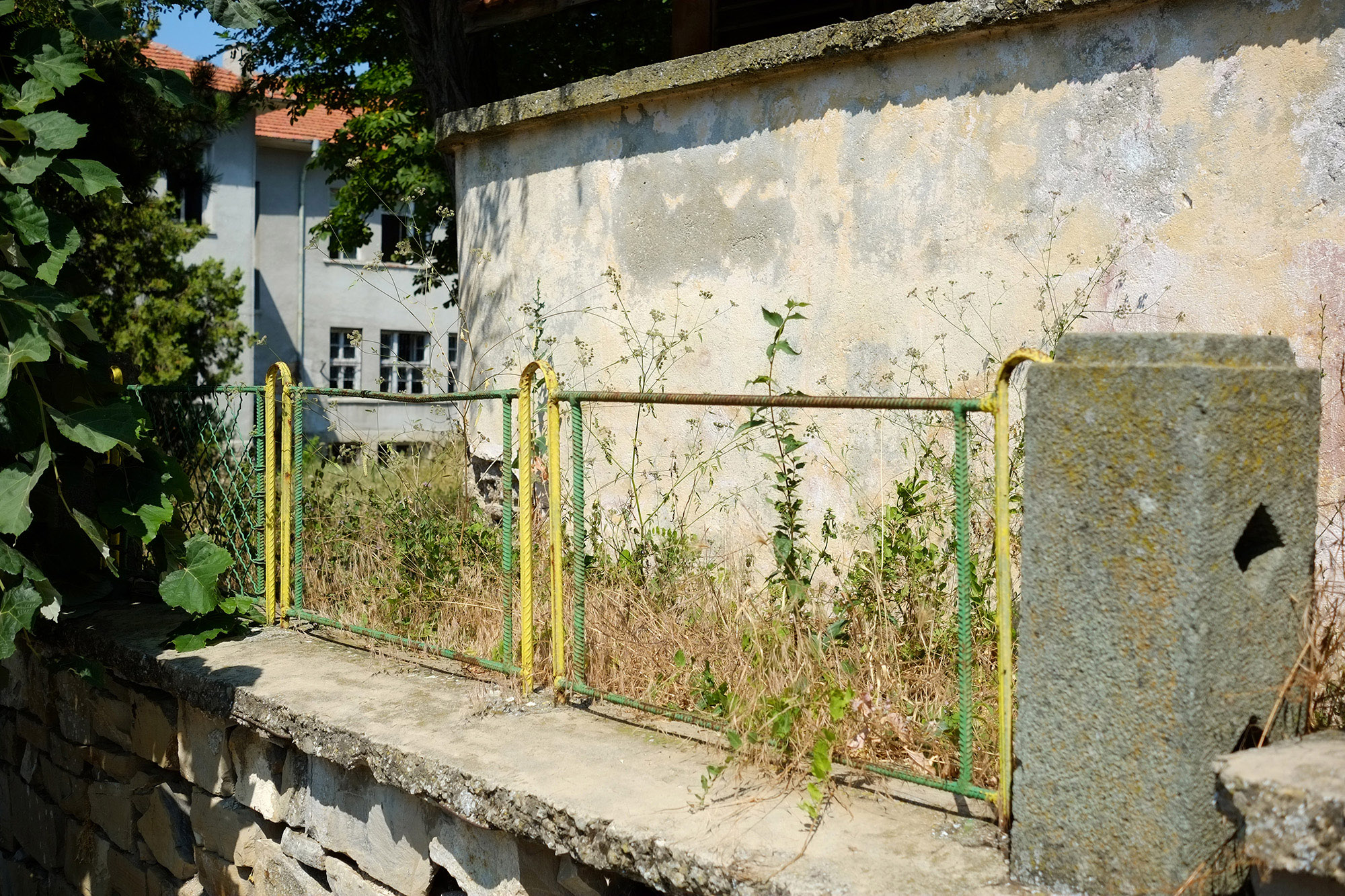
A crooked sign greeted me as I entered the yard - “Primary School “Tsanko Bakalov Tserkovski” - Chernograd Village - Province of Burgas”.
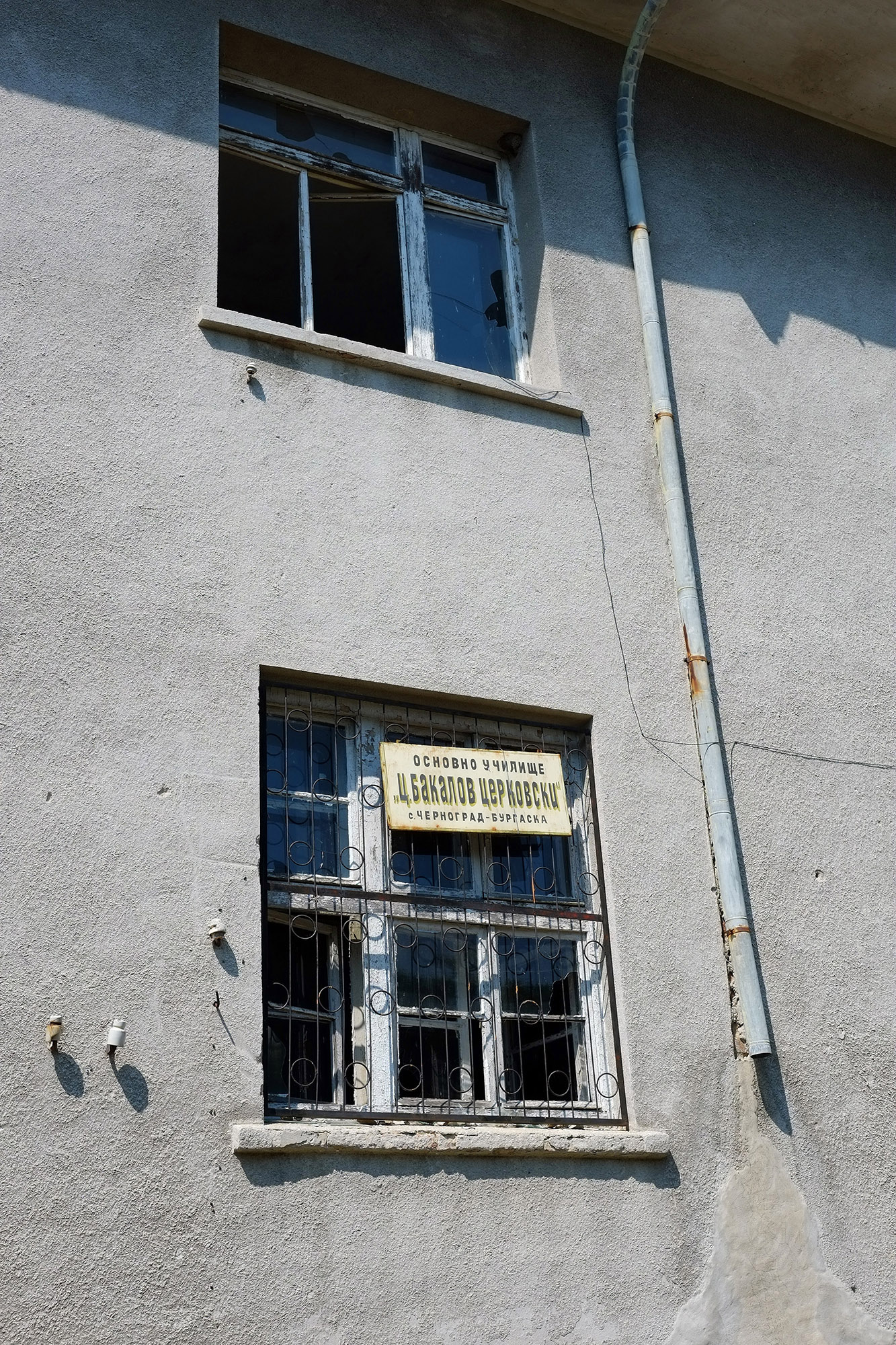
I didn't have to go far before I found an unobstructed way in. Upon further inspection, I realized that more or less every door of the building was open for visitors. Climbing a small flight of stairs, I entered through a first floor entrance. The dark-brown stained doors, were once obviously quite majestic and academic in their appearance. Now, vandalism and neglect had reduced them to peeling and decaying shadows of their former selves. Bright pink paint ornamented the walls inside, and a longer flight of stairs led downward into a basement.
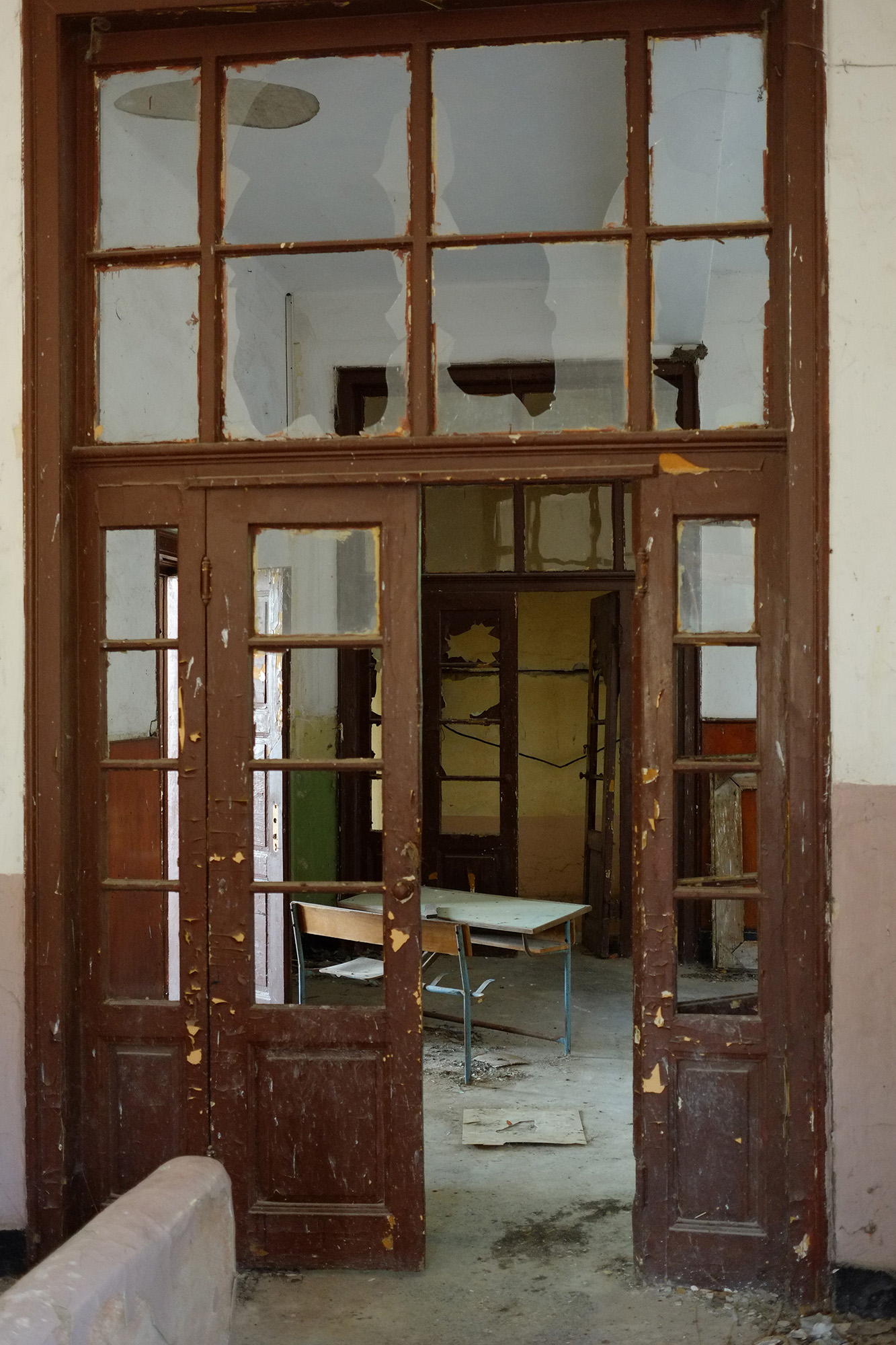

I checked out the first two rooms next to the entrance (which produced some interesting finds) and proceeded right, through one of the main inside doors, toward the first-floor hallway.
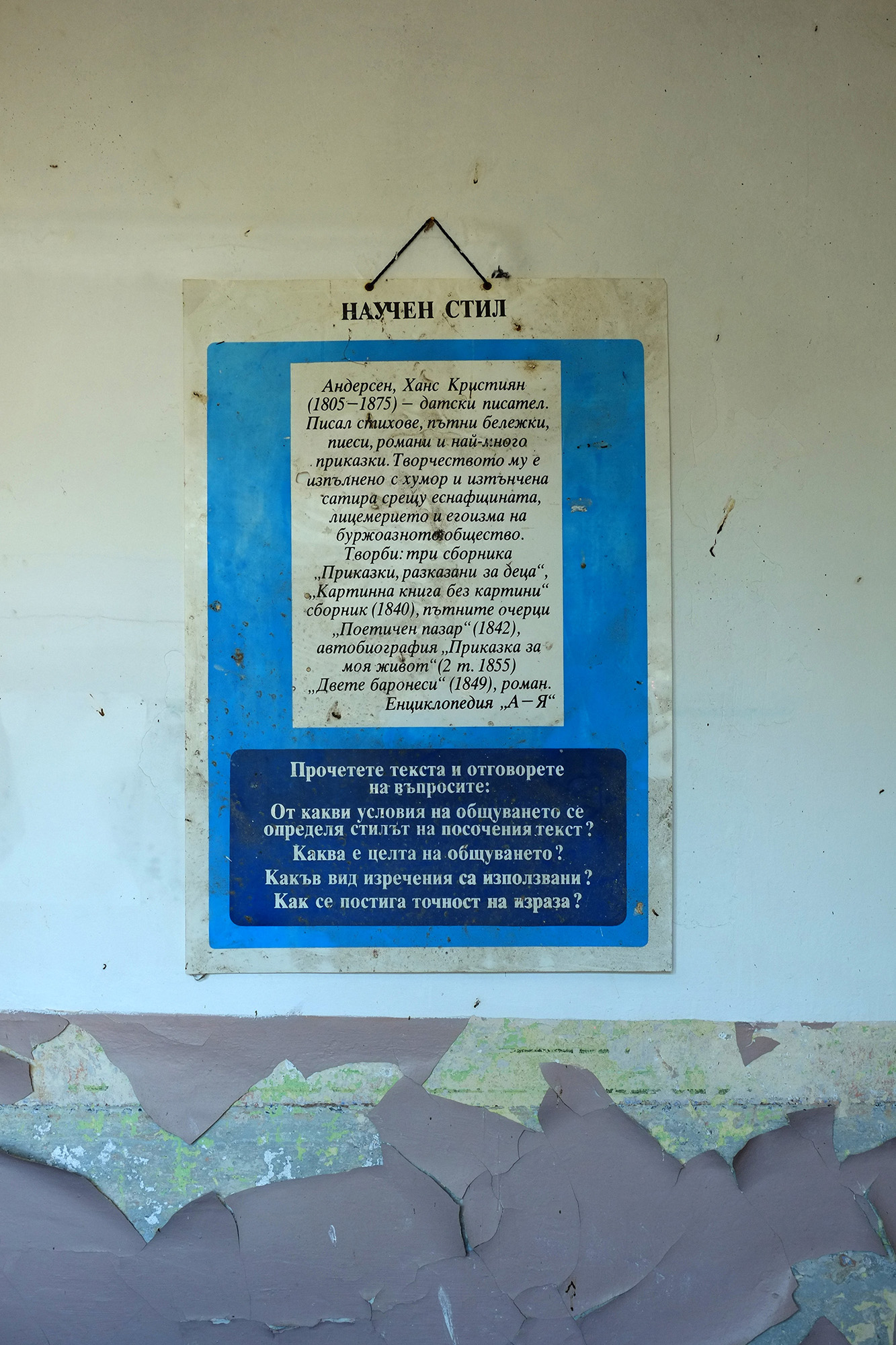

A lone desk, either randomly dragged out or strategically placed, sat in front of the empty classrooms.

Moving past it, I entered the rooms themselves, stumbling upon long-abandoned cupboards, books and blackboards cracked from disuse.



A physical education room with hang bars still displayed its wares, along with a surprisingly bright coat of green paint upon the cracking walls.

I continued down the main hallway, past windows and doors, locks long-gone, creaking and moaning as the summer wind swept through the barren building. More blackboards, remains of computers, patriotic stickers ("Bulgaria - My Motherland") and dismembered and disemboweled school furniture came within my sight as I entered the empty rooms one by one. And of course, rows upon rows of empty desks, sitting on the floors of empty classrooms where the echoes of children's voices had faded years ago.
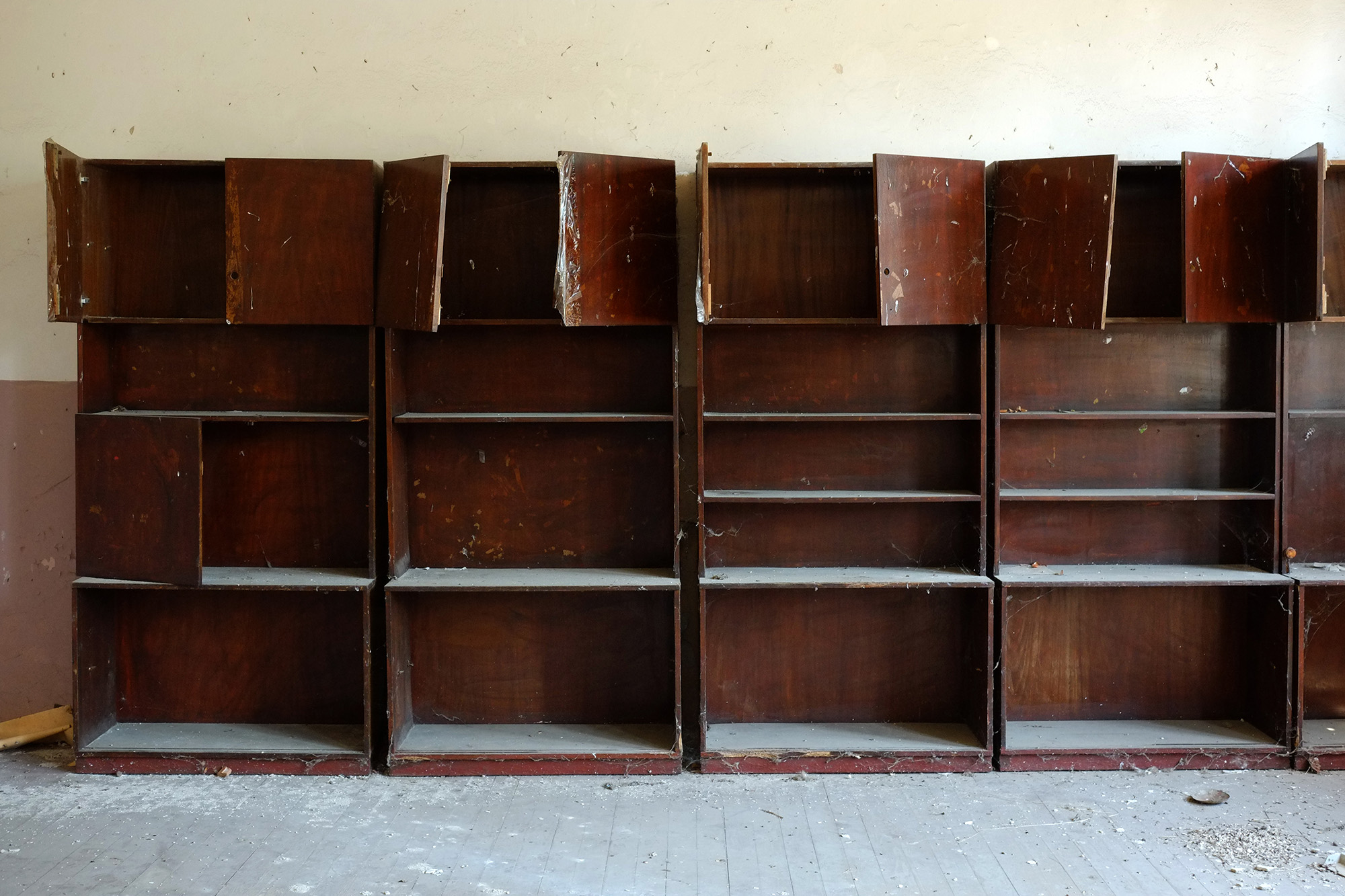



More disarray of mangled furniture further down, but this time, yet another added feature of the corpse of the former school building - an assortment of clothes.


In one of the adjacent classrooms, a board displaying the Bulgarian alphabet and the numbers from 1 to 20 was resting on its head, turned upside down in a microcosmic display, rather symbolic of the greater destruction that had befallen the unfortunate ruin of what was once the Tsanko Tserkovski Primary School.
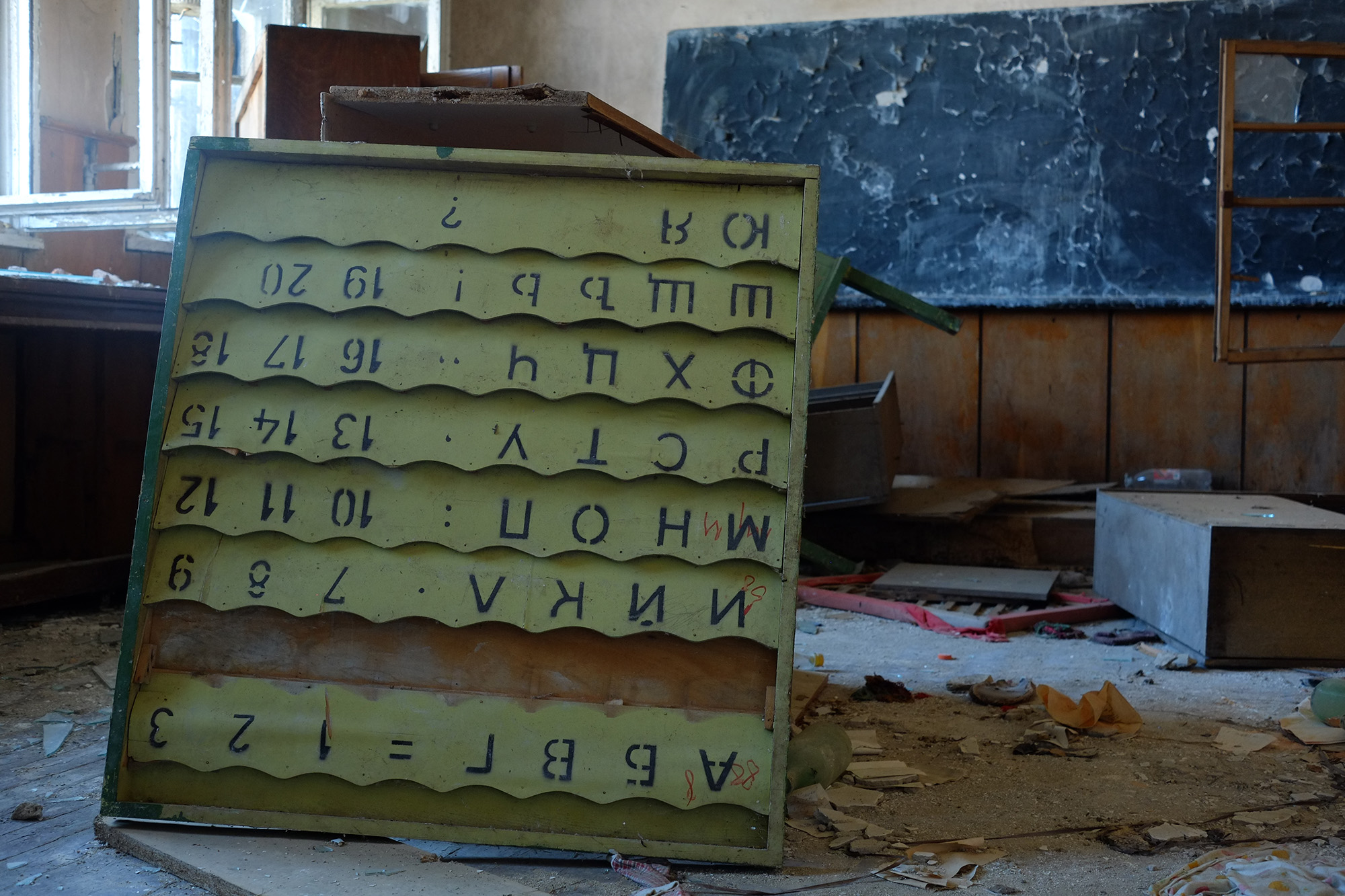
Having exhausted the exploration possibilities of the first floor, I ventured up the still very solid concrete stairs, complete with a sturdy metal railing that still stood somewhat proud, amidst the corrosion. It was time to see the second floor.


Of course, no abandonment would be complete without a collection of various signage, posters and displays. This site being no exception, the upper level offered a plethora of them for my photographic pleasure!





I also noticed the random classroom sign, displaying the grade level of the class that used to inhabit the particular room (I suppose it might have been their home room, so to speak). The manner of display and the materials used - black glass with silver painted letters - was in accordance with the all-prevalent socialist style I remember vividly from my youth.

The wind was howling all around the building, creating a cacophony of all manner of ghostly creaks, moans and crashes. Despite this, I knew that there was absolutely no one around and the only danger was potential falling glass, from a shattered nearby window. Sensing that there was still plenty more to see, I ventured further up to the attic. The lack of railing and of glass in the third-floor window frames made the ascent tricky. As I finally made it up, I was greeted by utter darkness and very hot air, as the midday sun had been baking the tile roof for hours now. Feeling my way around and being careful not to fall through an unexpected gap in the aging floor, I examined the surroundings. The ghostly display of artifacts continued.
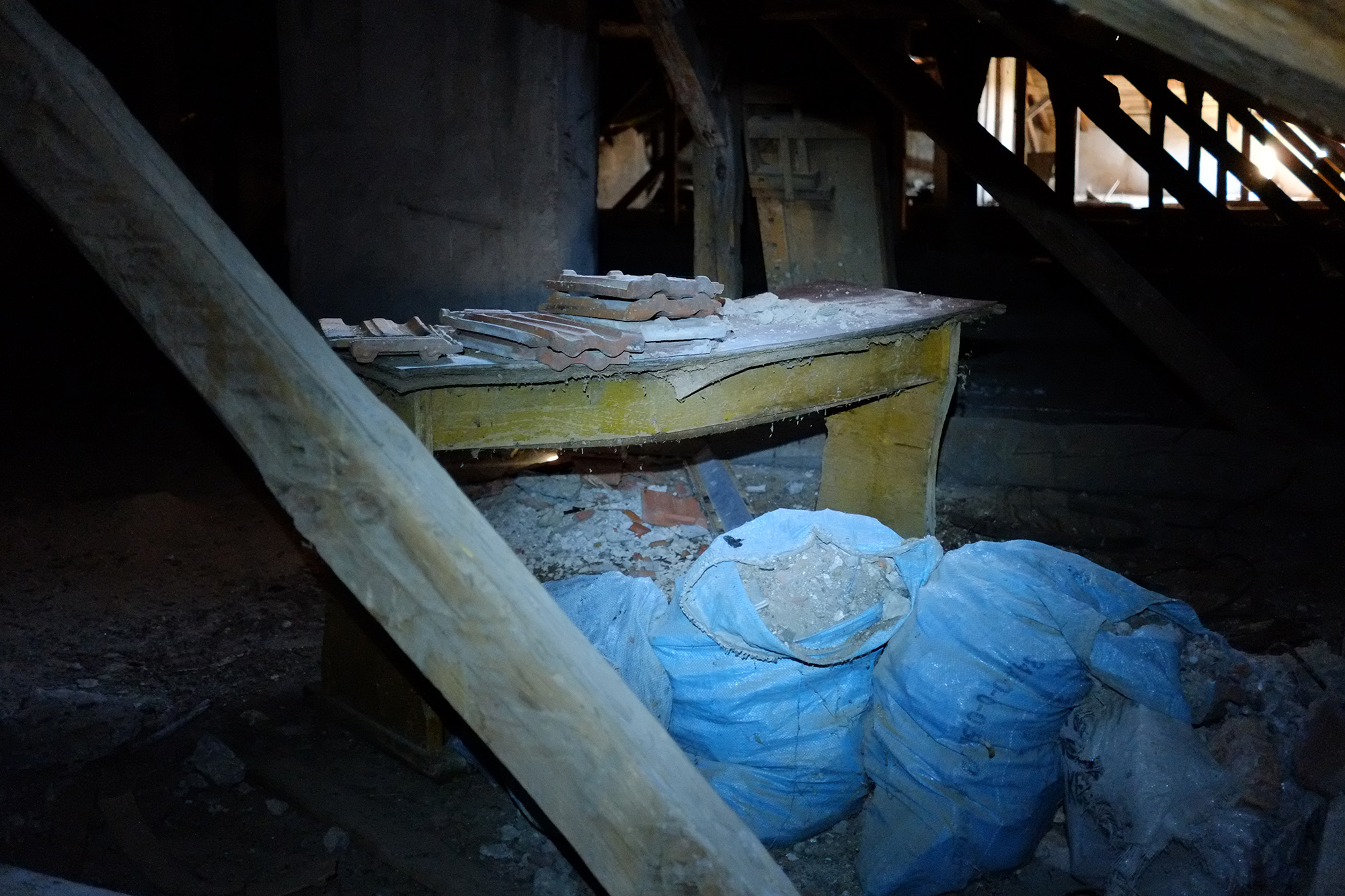

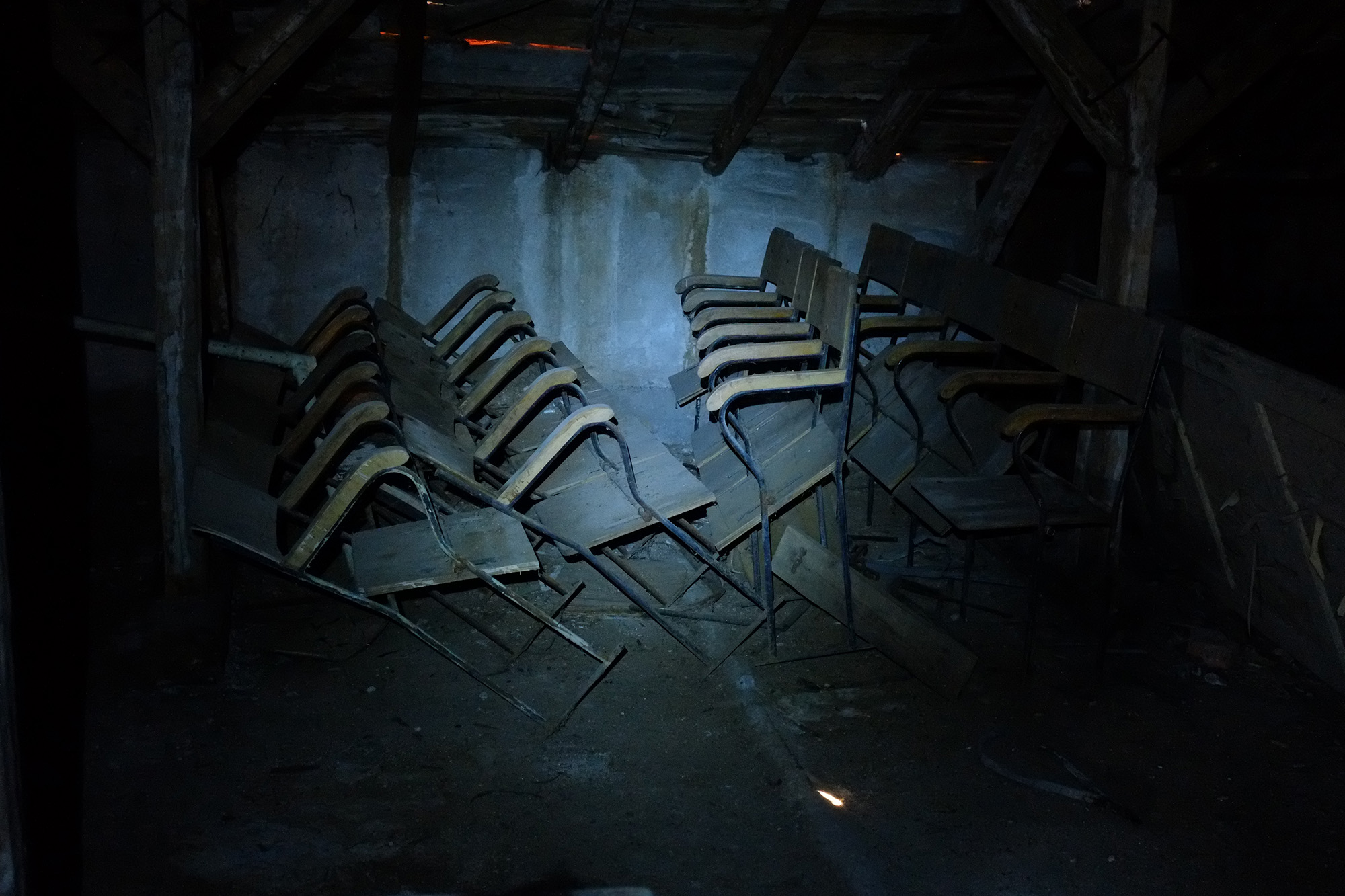
Logically, when one has seen the top of the building, one can't leave without also descending to the very bottom. I headed for the basement, expecting the grand finale, and in a way, I got just what I bargained for. Weaving my way around garbage, decay, darkness and various obstacles, I managed to locate the kitchen and washroom. The stoves, sinks and water heater still stood, right where their last users had left them.

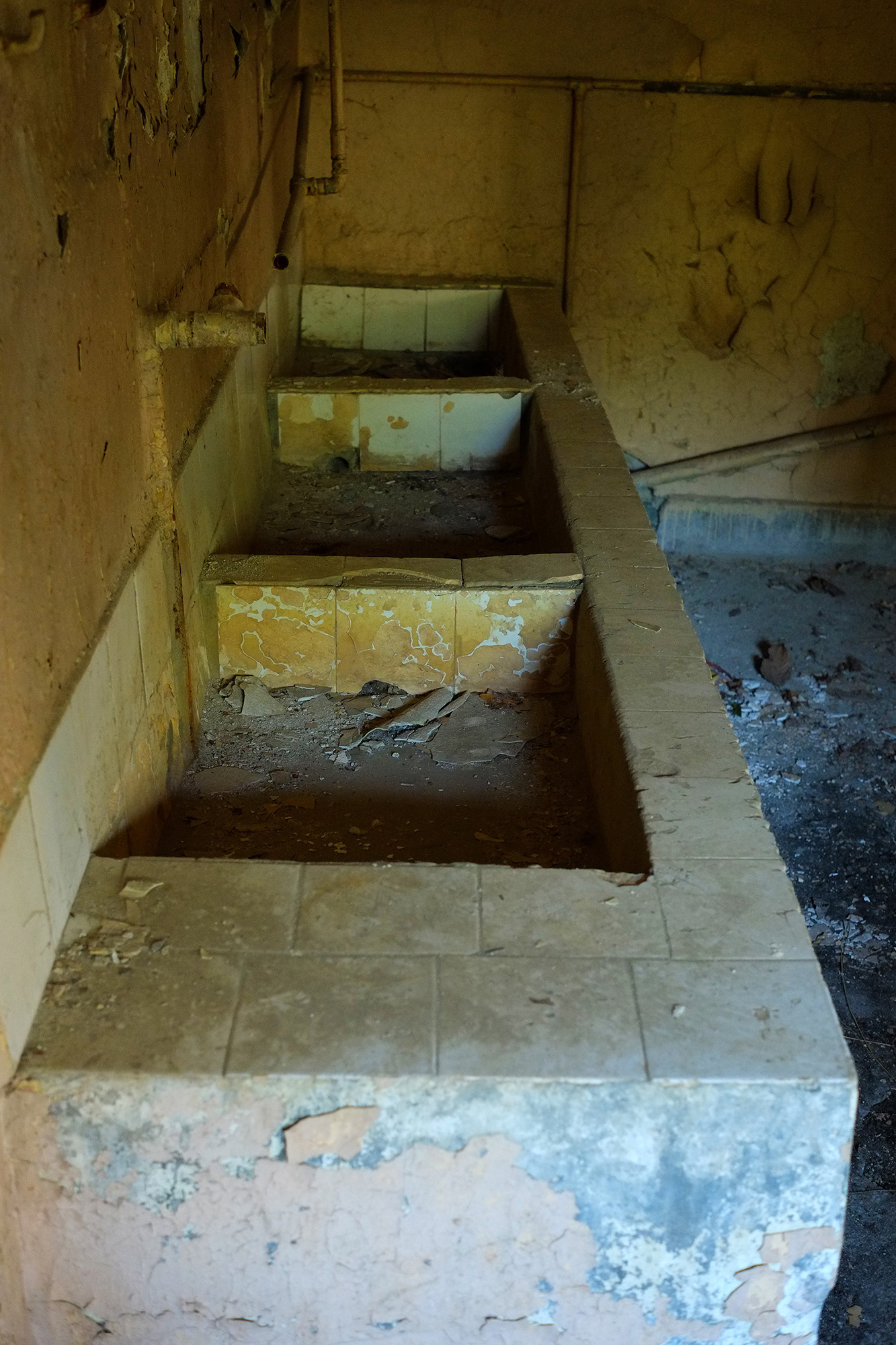

But, in the end, as epic as the kitchen department was, nothing could surpass... the stage!

Having spent well over an hour at the Tsanko Tserkovski Primary School, and sensing that nothing could truly surpass the stage, I decided to find my way to one of the exits. It had been a fine adventure and I had seen more than I had ever hoped to see in the sleepy little village of Chernograd.
----
As fascinating as such a place is, when it comes to photography and exploration, it nevertheless stands as evidence of a very serious problem - the abandonment and gradual disappearance of the Bulgarian village. Lack of jobs, the younger generations’ lack of interest in village life and a tendency toward urbanization and relocation to bigger cities is slowly leaving the Bulgarian countryside barren. Where once were schools, now stand rotting buildings. City squares once teeming with life, now fail to produce a single human being that one can interact with and maybe even learn a bit about the history of the place from. If we don't realize our mistakes before it is too late, we will manage to successfully erase a vitally important part of this beautiful country's past, present and future. Sadly, as nothing ever exists in a vacuum, this particular issue is related to and dependent upon many broader and all-encompassing problems affecting Bulgaria as a whole. Still, it is sad to see the legacy of the past reduced to rubble. I can’t help but foolishly hope, against my better judgement and the obvious facts, that change for the better is not far off.
But for the primary school of Chernograd, it might already be too late.


Well done, Moni!!! Looks like we can have a new Aleko in you! It was a real pleasure reading your writing. Sad but a reality. No turning back, I think.
Thanks, Mariana! I agree with you. Unfortunately, I think there is no going back. At least not anytime soon, anyway... Might as well document the remains, though - at least there will be some small memory left behind!